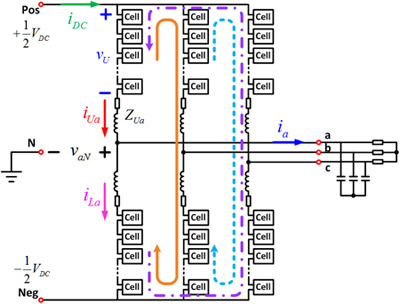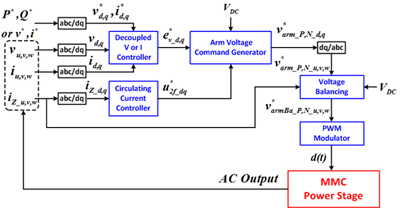LIBRARY
Modular-Multilevel-Converters Family - A Survey of Features, Topologies, Controls and Applications

The building-block cell is the basic unit of the MMC giving unipolar or bipolar voltages at its output terminals. Normally, a half-bridge or H-bridge is most often used as the circuit for each cell, however, theoretically it could be any topology that has a capacitive DC and two-terminal AC outputs. Those cells could be connected in various topologies, such as Star/Delta, Matrix and Hexagonal MMC, in order to meet specific application requirements. e.g. the basic MMC topology in Fig.1 fits perfectly for the HVDC transmission.
One feature of the MMC that is different from other multilevel converters is the circulating current induced by harmonic ripples on cell capacitors. This current can bring about additional power loss and unstable risks, so it should be controlled for proper purpose in specific applications.
Researching endeavors on MMC can be categorized into different function blocks respectively, shown in Fig.2. Literature has been published that aims to solve problems or to raise new proposals in domains such as V/I or P/Q controller design, circulation current control, capacitor voltage balancing, PWM multilevel modulators and so forth. Furthermore, research on variable frequency applications like motor drives, where there is probably the biggest disadvantage for MMC locates, is also being carried out to expand the areas of implementation of this topology.























































































